The Tranquil Beauty of Quzi Temple: Your Next Spiritual Retreat
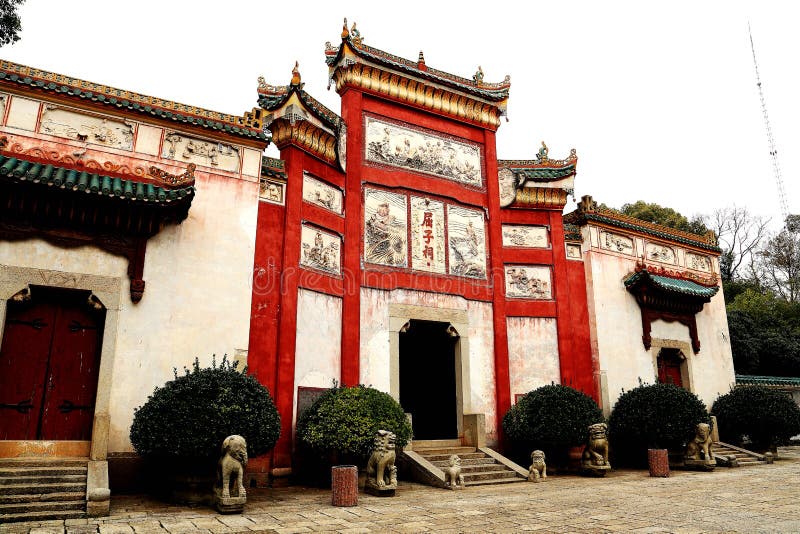
An Essential Guide to Visiting Quzi Temple
In This Guide
- An Essential Guide to Visiting Quzi Temple
- The Rich History and Legends of Quzi Temple
- Main Highlights: What You Absolutely Can’t Miss
- Planning Your Visit: A Practical Guide
- Tickets: Prices, Booking, and Tips
- How to Get There: A Complete Transportation Guide
- Local Cuisine and Accommodation Nearby
- Frequently Asked Questions
- Final Thoughts on Your Trip
Visiting Quzi Temple is an enriching experience that transports travelers back in time, steeped in the rich tapestry of Chinese history and culture. Nestled in the heart of the beautiful city of Jixi, Heilongjiang Province, this historical temple is dedicated to the revered poet Qu Yuan (屈原), a figure celebrated for his profound contributions to Chinese literature and philosophy. As you wander through the temple grounds, you’ll find yourself surrounded by lush scenery, intricate architecture, and the echoes of poetry that have inspired generations.
Quzi Temple serves not only as a sanctuary for Qu Yuan’s spirit but also as a vibrant hub for cultural activities, particularly during festival seasons. Travelers can partake in traditional ceremonies, admire stunning works of calligraphy, and witness local artists showcasing their craft. The temple’s serene environment offers a perfect backdrop for reflection, making it an ideal spot for those seeking both spiritual solace and cultural immersion.
Whether you are an ardent admirer of classic Chinese literature, a history enthusiast eager to explore the legacies of ancient poets, or simply a curious traveler looking to delve into the local culture, Quzi Temple promises an unforgettable journey. Prepare to be captivated by its historical significance, architectural beauty, and the timeless wisdom of Qu Yuan that resonates through the ages.

Quzi Temple.
The Rich History and Legends of Quzi Temple
Unveiling the Rich Tapestry of Quzi Temple
Nestled in the heart of China, Quzi Temple (屈子祠) stands as a magnificent tribute to the revered poet Qu Yuan, whose legacy transcends time and continues to resonate with the spirit of Chinese culture. This sacred site is not merely an architectural marvel; it is steeped in profound history and captivating legends that reflect the values, struggles, and aspirations of the Chinese people.
Historical Significance
Quzi Temple was established during the Southern Song Dynasty (1127-1279 AD) in honor of Qu Yuan, a noble figure from the Warring States period (475-221 BC). Qu Yuan is celebrated as a poet and a statesman, best known for his passionate works, particularly the “Li Sao” (The Lament), which expresses his loyalty to his country and his deep despair over its political corruption. His tragic end—drowning himself in the Miluo River—has immortalized him as a symbol of patriotism and integrity.
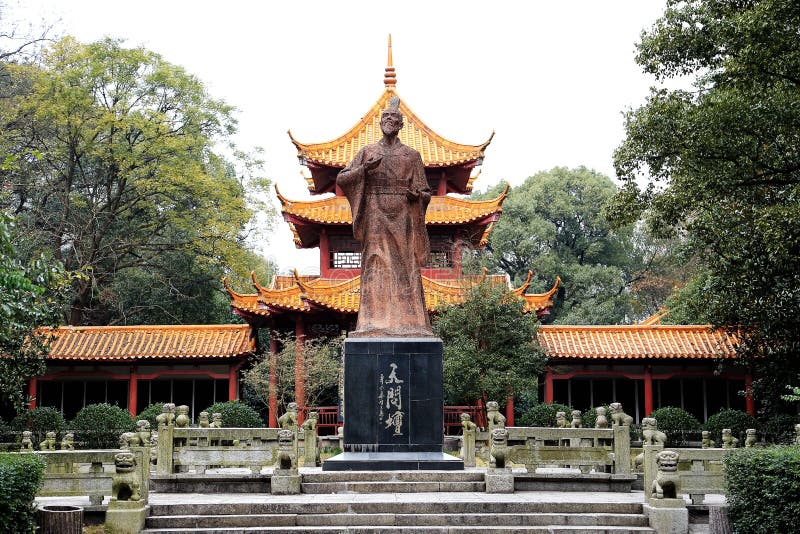
Quzi Temple.
The temple has undergone various renovations and expansions throughout history, with its current structure reflecting the architectural styles of the Ming (1368-1644) and Qing (1644-1912) dynasties. It serves as both a shrine for worship and a cultural center where the rich traditions surrounding Qu Yuan are preserved and celebrated.
The Legends of Qu Yuan
The lore surrounding Qu Yuan and the temple is as vibrant as the festivals that honor him. One of the most poignant legends involves the annual Duanwu Festival, also known as the Dragon Boat Festival, celebrated on the fifth day of the fifth lunar month. According to tradition, when Qu Yuan took his life, local fishermen raced to the river in their boats to save him, throwing rice dumplings (zongzi) into the water to keep fish at bay and prevent them from consuming his body. This act of devotion has evolved into the festive practices we see today, where dragon boat races and the preparation of zongzi are integral parts of the celebration.

Quzi Temple.
Another legend tells of Qu Yuan’s spirit wandering the riverbanks, guiding and protecting the people of his homeland. Visitors to Quzi Temple often recount experiences of feeling a connection to the poet, as if his spirit still lingers, inspiring them to be steadfast in their own commitments and aspirations.
Architectural Marvels
The temple itself is a reflection of Qu Yuan’s spirit, characterized by its elegant design and beautiful surroundings. Visitors are greeted by intricate stone carvings and vibrant murals that depict scenes from Qu Yuan’s life and the tales of his dedication to his country. The serene environment, complemented by lush gardens and tranquil water features, creates a space for reflection and reverence.
Key features of Quzi Temple include:

Quzi Temple.
- The Main Hall: This is the heart of the temple, housing a statue of Qu Yuan. Pilgrims and visitors pay their respects here, often leaving offerings of flowers and rice.
- The Pavilion of Poetry: A space dedicated to reciting and appreciating Qu Yuan’s literary works, fostering a deep connection to his artistry.
- The Dragon Boat Sculpture: A tribute to the fishermen who raced to save Qu Yuan, symbolizing the community’s enduring respect for his legacy.
Cultural Impact
Quzi Temple not only serves as a monument to Qu Yuan’s life but also as a cultural hub where poetry readings, traditional music performances, and art exhibitions take place. Throughout the year, the temple hosts various events that draw locals and tourists alike, further embedding Qu Yuan’s ideals into contemporary Chinese culture.
In visiting Quzi Temple, travelers are not merely stepping into a historical site; they are immersing themselves in a narrative that has shaped the identity of a nation. Through its legends and historical significance, the temple invites visitors to reflect on themes of loyalty, sacrifice, and the enduring power of the human spirit.

Quzi Temple.
Conclusion
Whether you are a history enthusiast, a poetry lover, or simply seeking a deeper understanding of Chinese culture, a visit to Quzi Temple promises an enriching experience. Here, legends come alive, and the spirit of Qu Yuan inspires a new generation to uphold values that define humanity’s quest for integrity and purpose.
Main Highlights: What You Absolutely Can’t Miss
Key Attractions at Quzi Temple (屈子祠)
Quzi Temple, a cultural gem nestled in the heart of China, is dedicated to the revered poet Qu Yuan (屈原). As you explore this historical site, you’ll find a rich tapestry of history, art, and spirituality. Here are the main highlights that you absolutely cannot miss during your visit:
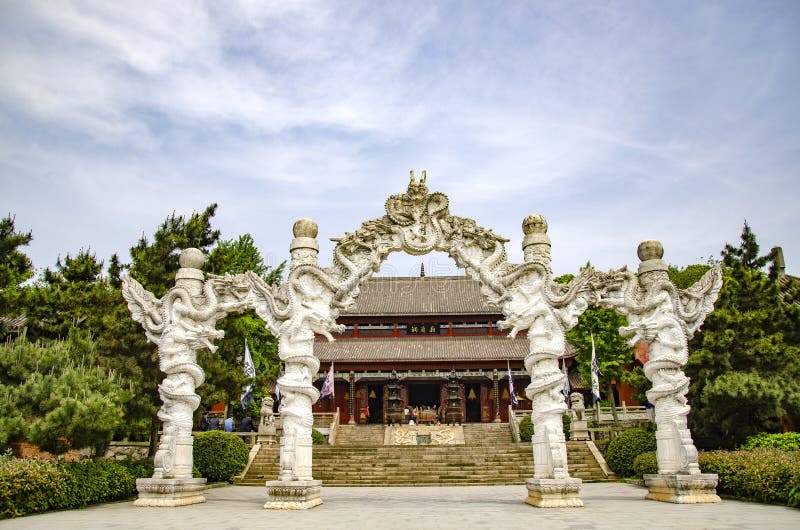
Quzi Temple.
1. The Grand Entrance Hall
- Description: The entrance hall features intricate wooden carvings and traditional Chinese architectural styles that set the tone for your visit.
- What to Look For: Pay attention to the detailed depictions of Qu Yuan’s life and works, artistically rendered in the beams and panels.
2. The Main Hall of Worship
- Description: This is the temple’s focal point, housing a statue of Qu Yuan, draped in ceremonial robes.
- Cultural Significance: Visitors often light incense and offer prayers, a practice rooted in ancient Chinese customs aimed at honoring ancestors and literary figures.

Quzi Temple.
3. The Poetic Garden
- Description: Surrounding the temple, this serene garden is designed to evoke the landscapes described in Qu Yuan’s poetry.
- Highlights: Stroll along meandering paths lined with willow trees, lotus ponds, and stone sculptures that represent themes from Qu Yuan’s works. It’s a perfect spot for reflection and tranquility.
4. The Historical Exhibits
- Description: Inside the temple complex, you’ll find exhibits dedicated to Qu Yuan’s legacy, featuring manuscripts, artwork, and artifacts from the Warring States period.
- What to Expect: Engaging displays that provide insights into Qu Yuan’s impact on Chinese literature and culture, alongside historical context about the era he lived in.
5. Annual Dragon Boat Festival Celebrations
- What It Is: If you visit during the Dragon Boat Festival, you’ll witness vibrant festivities commemorating Qu Yuan’s legacy, including dragon boat races and traditional food offerings like zongzi (sticky rice dumplings).
- Experience: Join the locals in celebrating this rich cultural heritage, and immerse yourself in the lively atmosphere filled with music, dance, and culinary delights.

Quzi Temple.
6. The Calligraphy Pavilion
- Description: This pavilion showcases pieces of calligraphy inspired by Qu Yuan’s poetry, crafted by various artists.
- Tip: Spend time observing the different styles and techniques, and consider purchasing a small piece to take home as a unique souvenir.
7. The Scenic Overlook
- Location: A pathway leads you to an overlook offering a breathtaking view of the surrounding landscape and river.
- Why Visit: It’s a fantastic photo opportunity, and the peaceful ambiance allows for quiet contemplation, reflecting on Qu Yuan’s timeless messages of loyalty and patriotism.
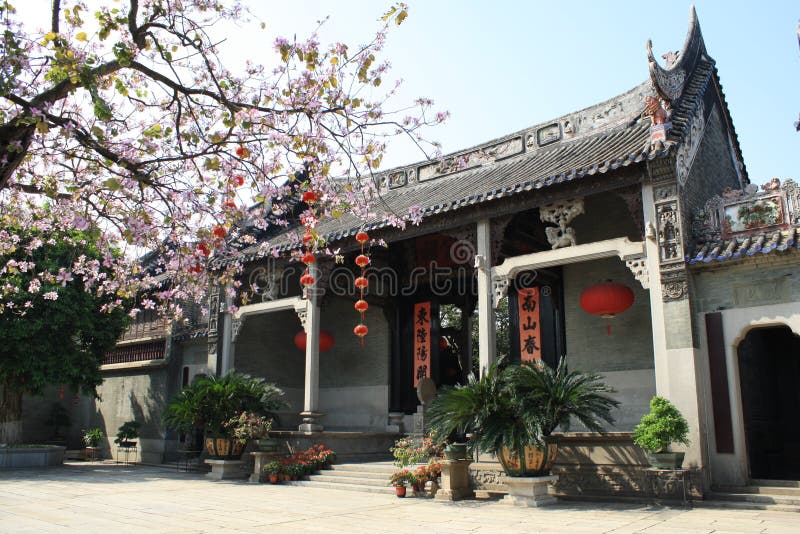
Quzi Temple.
Practical Tips for Your Visit
- Best Time to Visit: Early morning or late afternoon to enjoy cooler temperatures and fewer crowds.
- How to Get There: Accessible by public transport or a short taxi ride from nearby cities.
- What to Bring: A camera for photography, comfortable walking shoes for exploring the grounds, and a notebook for jotting down insights inspired by Qu Yuan’s poetry.
Quzi Temple is not just a historical site; it is a vibrant cultural experience that honors one of China’s most beloved poets. Make sure to immerse yourself fully in the beauty and significance of this remarkable destination!
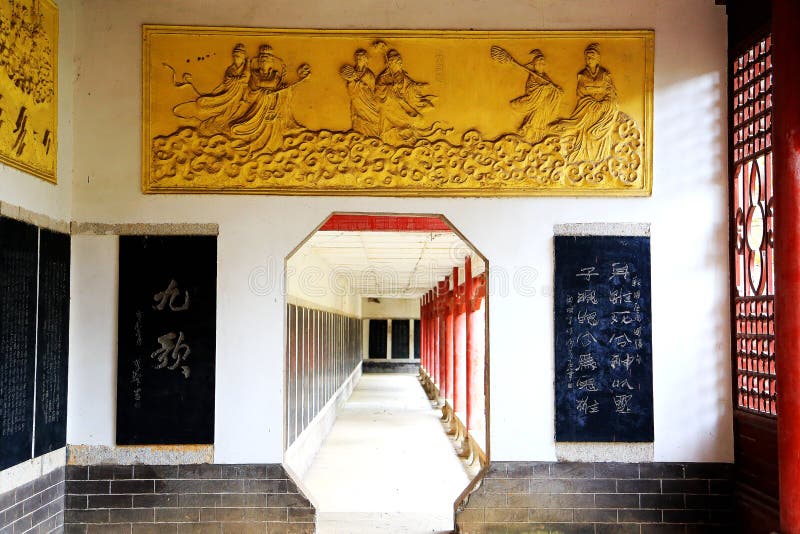
Quzi Temple.
Planning Your Visit: A Practical Guide
Essential Information for Your Visit to Quzi Temple (屈子祠)
Visiting Quzi Temple offers a unique glimpse into China’s rich historical and cultural heritage. To make the most of your trip, here’s a practical guide to help you navigate your visit effectively.
Location and Accessibility
Quzi Temple is situated in the heart of Jiangling County, within Hubei Province. It is conveniently located near the banks of the Yangtze River, providing a picturesque backdrop.
- Getting There:
- By Train: The nearest major railway station is in Jingzhou City, approximately 30 kilometers away. From there, you can take a bus or hire a taxi to reach the temple.
- By Bus: Local buses frequently run from Jingzhou to Jiangling. Check schedules ahead of your visit.
- By Car: If you prefer driving, the temple is accessible via the G42 highway, which connects major cities.

Quzi Temple.
Opening Hours
- Daily: Quzi Temple welcomes visitors from 8:00 AM to 5:30 PM. It is advisable to arrive early to enjoy a quieter experience and to explore the temple grounds fully.
Admission Fees
- Entry Fee: There is a nominal entrance fee, usually around 20 RMB (approximately $3 USD). This fee helps maintain the temple and its surrounding areas.
What to See
Quzi Temple is dedicated to the memory of the renowned poet Qu Yuan, a prominent figure in Chinese literature. Here are some highlights you shouldn’t miss:
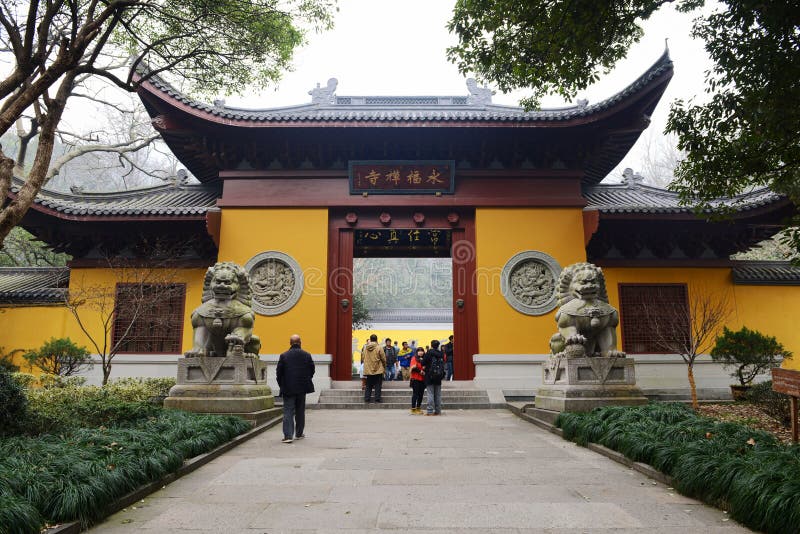
Quzi Temple.
- Main Hall: The architectural beauty of the main hall is a must-see, featuring intricate carvings and historical artifacts.
- Statue of Qu Yuan: A prominent statue dedicated to the poet, capturing his essence and significance in Chinese culture.
- Ancient Trees: The temple grounds are home to several ancient trees, believed to be over a hundred years old, offering a serene environment for reflection.
- Cultural Performances: Depending on the time of your visit, you may experience traditional performances that celebrate Qu Yuan’s poetic legacy.
Practical Tips
- Dress Code: While there is no strict dress code, wearing comfortable, respectful clothing is recommended, especially when visiting sacred sites.
- Photography: Feel free to take photos, but be respectful of any signs indicating restricted areas.
- Guided Tours: If you want a deeper understanding of the temple’s history, consider joining a guided tour. Local guides can provide insights and stories that enhance your experience.
- Language: While some staff may speak basic English, learning a few key Mandarin phrases can enrich your interactions with locals.
Nearby Attractions
After visiting Quzi Temple, consider exploring these nearby sites:
- Jingzhou Ancient City: A short drive away, this well-preserved city offers a glimpse into ancient Chinese architecture and history.
- Yangtze River Scenic Area: Enjoy a leisurely stroll along the river or take a boat tour to appreciate the natural beauty of the region.
Accommodation Options
For a comfortable stay, consider these options in Jingzhou:
- Luxury: Jingzhou Grand Hotel offers upscale amenities and proximity to the city center.
- Mid-range: Jinjiang Inn provides clean, comfortable rooms with good service at reasonable prices.
- Budget: Several hostels and guesthouses cater to budget travelers, offering a more local experience.
Conclusion
A visit to Quzi Temple is not only a journey into the heart of Chinese culture but also a chance to reflect on the enduring legacy of Qu Yuan. With this guide, you’re well-equipped to make the most of your experience, ensuring a memorable trip steeped in history and tradition.
Tickets: Prices, Booking, and Tips
When planning your visit to Quzi Temple (屈子祠), understanding ticket prices, booking procedures, and some handy tips will ensure a smooth and enriching experience. This historic site, dedicated to the renowned poet Qu Yuan, is not only a cultural treasure but also a beautiful place for reflection and exploration.
Ticket Prices
-
General Admission: The entry fee for Quzi Temple is typically around ¥30 (approximately $4.50 USD). This fee grants you access to the temple grounds and its various exhibitions.
-
Discounted Rates: Students, seniors, and children may be eligible for discounted tickets, often priced at ¥15 (around $2.25 USD). Ensure you bring valid identification for verification.
-
Free Entry Days: Occasionally, the temple may offer free entry on specific national holidays or during local festivals. Check the temple’s official website or local tourism resources for announcements.
Booking Information
-
On-Site Purchase: Tickets can be easily purchased on-site, so there’s no need for advance booking unless you’re visiting during peak tourist seasons or special events.
-
Online Booking: For added convenience, consider booking tickets through popular travel platforms or the temple’s official website. This option can help you avoid long queues, especially during weekends or holidays.
Tips for Visiting
-
Best Time to Visit: To fully appreciate the tranquility of Quzi Temple, aim to visit early in the morning or late afternoon. These times not only offer a serene atmosphere but also provide beautiful lighting for photography.
-
Explore the Surroundings: Beyond the temple itself, the surrounding area is rich with cultural and historical significance. Allocate time to stroll through nearby gardens and historic sites to enhance your experience.
-
Guided Tours: For those wanting a deeper understanding of the temple’s history and significance, consider joining a guided tour. Local guides often share fascinating stories and insights that bring the experience to life.
-
Respectful Attire: As Quzi Temple is a place of worship and cultural importance, dressing modestly and respectfully is encouraged. This consideration enhances the sanctity of the environment and shows respect for local customs.
-
Photography: While photography is generally allowed, be mindful of any restrictions that may apply within certain areas of the temple. Always ask for permission if you are photographing individuals, especially monks or worshippers.
Conclusion
Visiting Quzi Temple is a journey through Chinese history and culture that leaves a lasting impression. Armed with the right ticketing information and preparation tips, you are set to delve into the rich legacy of Qu Yuan and enjoy the serene beauty of this sacred site. Happy travels!
How to Get There: A Complete Transportation Guide
Getting to Quzi Temple (屈子祠)
Nestled in the heart of Hubei Province, Quzi Temple is a significant cultural and historical site dedicated to the revered poet Qu Yuan. This temple not only serves as a testament to ancient Chinese literature but is also a serene place for reflection. For international travelers eager to explore this remarkable destination, understanding how to navigate there is essential. Below is a comprehensive guide to help you reach Quzi Temple effortlessly.
Arriving in China
-
International Airports: The nearest major airport to Quzi Temple is Wuhan Tianhe International Airport (WUH), which is approximately 250 kilometers away. This airport is well-connected to major cities worldwide including Beijing, Shanghai, and Guangzhou.
-
Alternative Airports: If you are traveling from nearby countries, consider flying into smaller regional airports such as Yichang Sanxia Airport (YIH), which is closer to the temple (about 100 kilometers away).
From Wuhan to Quzi Temple
Once you arrive in Wuhan, here are your options to reach Quzi Temple:
- By Train:
- Wuhan to Jingzhou: Take a high-speed train from Wuhan Railway Station to Jingzhou Railway Station. The journey takes around 1.5 hours.
-
Jingzhou to Quzi Temple: From Jingzhou, you can take a local bus or taxi to reach Quzi Temple, which is about 40 kilometers away (approximately 1 hour).
-
By Bus:
- There are direct buses from Wuhan to Jingzhou that leave from various bus stations, including the Wuhan Long-distance Bus Station. The bus journey takes around 3 hours.
-
Once in Jingzhou, local buses or taxis can take you to the temple.
-
By Car:
- Renting a car or hiring a private driver can be a convenient option. The drive from Wuhan to Quzi Temple via G55 and S202 takes about 3 hours. Ensure you have a GPS or map application handy, as some rural roads may not be well-signposted.
Local Transportation Options
Once you arrive in the vicinity of Quzi Temple, navigating the local area is straightforward:
-
Taxis: Readily available in Jingzhou, taxis are a quick and easy way to reach the temple directly.
-
Bicycles: For the more adventurous, consider renting a bicycle to explore the surrounding area. The scenery around Quzi Temple is picturesque, making it an enjoyable ride.
-
Walking: If you are staying nearby, the temple is accessible on foot. The path leading to the temple is scenic, dotted with local shops and eateries.
Useful Tips
-
Language: While major cities have English-speaking residents, learning a few basic Mandarin phrases can significantly enhance your experience.
-
Timing: Aim to visit Quzi Temple during weekdays to avoid crowds. The temple is most atmospheric during early mornings or late afternoons.
-
Weather Considerations: Check the weather forecast before your trip, especially if you’re traveling during the rainy season (April to June).
-
Travel Insurance: Consider purchasing travel insurance that covers transportation delays, especially when traveling between cities.
By following this transportation guide, you will be well-equipped to embark on your journey to Quzi Temple, immersing yourself in its rich history and cultural significance. Whether you travel by train, bus, or car, the temple promises an enriching experience that connects you to the literary heritage of China.
Local Cuisine and Accommodation Nearby
When visiting Quzi Temple (屈子祠), not only can you delve into the rich tapestry of Chinese history and culture, but you can also savor the local cuisine and find comfortable accommodations nearby. Here’s a guide to experiencing the best of what this area has to offer.
Local Cuisine
The region surrounding Quzi Temple is known for its delectable dishes that reflect the local flavors and traditions of Hubei Province. Here are some must-try dishes and popular eateries:
-
Hot Dry Noodles (热干面): A quintessential dish from Wuhan, these noodles are served cold with a variety of toppings, including sesame paste, pickled vegetables, and a drizzle of chili oil. For an authentic experience, visit Da Wang Hot Dry Noodles (大王热干面), a local favorite known for its flavorful offerings.
-
Wuhan Spicy Duck (武汉鸭脖): This dish features duck necks marinated in a spicy broth, making for a savory and slightly addictive snack. You can find this delicacy at Wuhan Duck Neck Shop (武汉鸭脖店), where the aroma alone will draw you in.
-
Steamed Fish with Pickled Mustard Greens (剁椒鱼): A delightful dish that showcases the region’s fresh seafood, it is typically steamed with a spicy sauce and served with pickled mustard greens. Head to Xiao Yu Lou (小鱼楼) for a splendid take on this traditional recipe.
-
Doupi (豆皮): A local specialty made from a thin layer of rice and lentils, filled with meat and vegetables, and then pan-fried to a crispy perfection. Chuan Chuan Doupi (串串豆皮) is renowned for its authentic flavor and cozy atmosphere.
Accommodations Nearby
For travelers looking to rest after a day of exploration, there are several accommodation options that cater to various budgets and preferences:
-
Hubei Jinjiang International Hotel: A luxurious option situated just a short drive from Quzi Temple, this hotel offers modern amenities, elegant rooms, and a restaurant that serves a mix of local and international cuisine. Perfect for those seeking comfort and convenience.
-
Wuhan Yuyuan Hotel: This mid-range hotel combines affordability with great service. Located in a bustling area, it provides easy access to nearby attractions and local eateries, making it a practical choice for travelers.
-
Backpacker’s Hostel: For budget-conscious travelers, this hostel offers dormitory-style accommodations and a welcoming atmosphere. It’s a great place to meet fellow travelers while enjoying an authentic local experience at an affordable price.
-
Airbnb Options: For a more personalized stay, consider exploring Airbnb listings in the vicinity. Many locals offer cozy rooms or entire apartments, giving you a taste of daily life in this vibrant city.
Conclusion
Visiting Quzi Temple not only immerses you in the cultural heritage of China but also opens up a world of culinary delights and comfortable places to stay. Whether you’re indulging in the rich flavors of local dishes or resting in a charming hotel, your experience will be both enriching and memorable.
Frequently Asked Questions
Frequently Asked Questions About Quzi Temple (屈子祠)
1. What is the historical significance of Quzi Temple?
Quzi Temple, dedicated to the renowned poet Qu Yuan, holds a vital place in Chinese culture and history. Built during the Tang Dynasty, this temple not only commemorates Qu Yuan’s contributions to literature but also symbolizes the enduring values of loyalty and patriotism. The temple serves as a reminder of the Dragon Boat Festival, which celebrates Qu Yuan’s legacy through traditional customs and rituals.
2. Where is Quzi Temple located?
Quzi Temple is situated in the picturesque city of Changsha, Hunan Province, China. Nestled within a serene environment, its location near the banks of the Xiang River makes it a perfect spot for both reflection and cultural exploration.
3. What can visitors expect to see at Quzi Temple?
Visitors to Quzi Temple can explore its exquisite architecture, featuring traditional Chinese design elements that reflect the era’s artistry. Inside, you will find statues of Qu Yuan, historical inscriptions, and beautiful gardens that enhance the temple’s tranquility. The temple also hosts various cultural exhibits that delve into Qu Yuan’s life and the history of the Dragon Boat Festival.
4. Are there any special events or festivals celebrated at Quzi Temple?
Yes! The most notable event is the Dragon Boat Festival, which usually takes place in June. During this time, the temple hosts various ceremonies, performances, and boat races to honor Qu Yuan. If you visit during this period, you’ll experience vibrant cultural activities and community celebrations.
5. Is there an entry fee to visit Quzi Temple?
Entry to Quzi Temple is typically free; however, there may be fees for specific exhibitions or guided tours. It’s advisable to check the official site or local tourism information for the latest details on any costs associated with your visit.
6. What are the best times to visit Quzi Temple?
The ideal times to visit Quzi Temple are during spring (April to June) and autumn (September to November) when the weather is mild and pleasant. Visiting during the Dragon Boat Festival also provides a unique glimpse into the vibrant local culture and traditions.
7. How can visitors reach Quzi Temple?
Quzi Temple is easily accessible by public transportation, including buses and taxis. If you are staying in downtown Changsha, you can take a local bus or hire a taxi, which should take around 20-30 minutes depending on traffic. Additionally, walking from nearby attractions can be a pleasant way to soak in the local atmosphere.
8. Are there any nearby attractions to explore after visiting Quzi Temple?
Absolutely! After exploring Quzi Temple, consider visiting the Hunan Provincial Museum, known for its impressive collection of artifacts, including mummies from the Han Dynasty. Additionally, the scenic Orange Isle offers beautiful views of the Xiang River and is perfect for a leisurely stroll. These sites complement the cultural experience of your visit to Quzi Temple.
Final Thoughts on Your Trip
As your journey comes to a close at Quzi Temple (屈子祠), take a moment to reflect on the profound experiences that this sacred site has offered you. Nestled in the heart of Chinese history, Quzi Temple is not merely a destination but a portal into the rich tapestry of ancient philosophies, literary achievements, and cultural reverence that have shaped China for centuries.
Embrace the Essence of Your Visit
Your time at Quzi Temple has surely deepened your understanding of the historical significance of Qu Yuan, the revered poet and statesman. Consider these lasting impressions:
-
Cultural Appreciation: You’ve walked the same paths as countless pilgrims, each seeking wisdom and solace. The temple’s serene atmosphere invites contemplation, allowing you to connect with centuries of tradition that celebrate integrity and loyalty.
-
Historical Insight: From the elegant architecture to the intricate carvings, every detail within the temple tells a story. Reflect on how these elements intertwine with China’s literary heritage, showcasing the country’s profound respect for its past.
-
Personal Reflection: Beyond the historical context, this visit encourages introspection. Qu Yuan’s life and works resonate with themes of perseverance and moral fortitude, prompting you to consider how these ideals apply in your own life.
Take Home More Than Memories
As you prepare to leave, remember that the spirit of Quzi Temple will accompany you. May it inspire you to seek knowledge, embrace cultural diversity, and foster an appreciation for the narratives that connect us all.
Final Thoughts
Travel is not just about the places you visit; it’s about the stories you gather and the connections you forge. Quzi Temple is a testament to the enduring power of culture and history. As you continue your journey through China or beyond, carry with you the lessons learned here, and let them guide your path. Safe travels, and may your adventures be filled with discovery and delight!